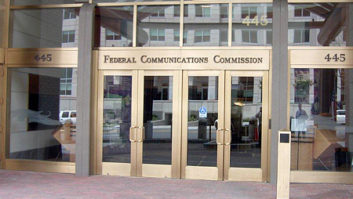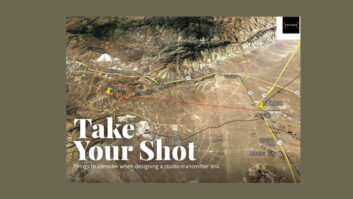The battle over performance royalties for U.S. broadcasts of music recordings continues to rage, with no end in sight.
The music industry, buoyed by its success in substantially increased royalties via compulsory license for Internet radio, is now trying hard to garner a similar outcome for satellite radio. But their eyes are on the big prize down the road — terrestrial broadcast radio, where the imposition of even a very small royalty could produce greatly increased revenues for the music industry.
To review, Internet and satellite radio have been paying royalties to both songwriters and performers essentially since their services were inaugurated, and recent changes are aimed at increasing the rates paid to performers under the standard, statutory license set by U.S. copyright law.
Meanwhile, U.S. terrestrial radio has only paid royalties to songwriters (at about the same, relatively low rate as the other radio forms have) but it has never paid performers, due to its historical exemption from royalties for airplay of music recordings.
The generally understood reason for this exemption — originally accepted by the record companies themselves — has been the “quid pro quo” premise that airplay of a given artist’s music increases sales of the record, and the artist benefits at the back end through the royalties generated by such sales.
It is this fundamental assumption that is now being challenged by the music industry, in that radio airplay does not necessarily stimulate sales, but may in fact serve as a substitute for them.
So the word for today is this particular connotation of “substitution,” the argument for which we will now explore.
Value-add or subtract?
Music formats on radio traditionally have served as a sort of proxy for audiences’ tastes.
A listener chooses a station (based on its format), and the station’s programmers do the rest. The music is selected by those agents of the listener using the criterion that the songs played currently represent the best of a given musical genre.
This “leave-the-driving-to-us” approach is radio’s value-add for listeners, and if done well, it will keep listeners tuned in, even when the station is playing other content (i.e., commercials).
At the same time, this form of music presentation generally benefited music companies as well, because it provided obvious promotion for the artist, but — at least for most of the last couple of decades — with two critical caveats: 1) Songs were rarely recorded off the air by listeners; and 2) Radio airplay typically presents only a single song from an artist at any given time, while the music was available for purchase only in a bundled form (on LP or CD — a constraint that accounted for a significant percentage of record industry profits).
Thus radio served as an almost perfect promotional medium for profitable music sales, with music formats serving as nearly nonstop “barker channels” for record companies.
The top 40 hit was to the CD as the trailer or TV commercial was to the movie, but there was no direct cost (at least via legal means) to the record company for its airplay.
Recently, however, two important things have changed: Music is widely available in unbundled form (via digital music downloads, legal and otherwise), and the number and variety of radio services have greatly expanded (including build-your-own formats on some Internet radio sites).
This has given rise to a new understanding among record companies regarding radio airplay, again in two parts: 1) The quid pro quo deal is really only profitable in a bundled world; and 2) Good radio can satisfy many consumers needs to the point that they will rarely have to buy any music — bundled or otherwise.
Religious debate
Such is the double whammy that the record industry contends it is facing at present.
The second point applies specifically to radio, and is at the heart of the “substitution” argument. Note that the concern is not so much that listeners will “steal” music by recording it off the air, but that convenience will drive them to just listen to “good enough” radio services most of the time, and not be motivated to purchase much music.
In other words, when all you need are the barker channels, why watch the whole movie? Or, when the trailers are that good, who needs the full-length?
Given such fundamental change in basic assumptions, the old model appears broken, and substitution happens.
Under this argument, radio has become so appealing to listeners that it is no longer a boon to the music business but a drain upon it.
As an obvious next step, the record industry is now looking to radio for compensation in the form of increased royalties, to counteract the lost sales that they believe such airplay generates (not to mention getting a piece of the action that they feel radio enjoys as a result of playing their music).
This is truly a hard argument to swallow among many traditional broadcasters, who believe just the opposite occurs, and that airplay still sells records (not to mention their sense that the value of radio comes from its original, curatorial work in selectively programming a format and interspersing it with other useful content — not simply benefiting from playing the work of others). And so a religious debate is born.
In a related development, some forward thinkers in the record industry are considering the future value of offering their own subscription services in lieu of à la carte sales — perhaps the ultimate attempt at “rebundling” their wares. But competitive music radio services would stand in the way of this move, as well.
Is all radio created equal?
Importantly, most of the substitutional argument seems to be leveled at the narrowly defined (and often commercial-free) formats found on satellite and Internet radio — including the customizable and adaptive streams available on the latter. The more constrained, traditional world of terrestrial music radio isn’t as much of a factor here.
But as terrestrial broadcasters try to compete with these newer radio forms through experimentation with new formats and multicast channels (not to mention cross-promoted Internet radio services of their own), they too will come increasingly into the crosshairs of the music industry’s royalty crusade.
Both radio and the record industry should be careful what they wish for, however. Improving quality and quantity of radio service is a good thing for broadcasters, but it provides additional traction to the record industry’s substitution argument. On the other hand, the inequity of different forms of radio paying different royalty rates has raised some concerns among regulators, and one proposed solution is to re-equalize them — at zero.
Remember also that these royalty negotiations involve the statutory license, but that broadcasters remain free to pursue individual licenses with music rights holders. As labor intensive as this might be, it could have some appeal if the statutory rates were set high enough.
But this, too, is a slippery slope. Consider that negotiating a free license with a record company in return for generous airplay of its music could be considered tantamount to legal payola, thereby potentially opening another legal can of worms. And the beat goes on.
It’s now clear that a multi-front royalty war is engaged, and will continue for some time across all radio and regulatory theaters. The endgame will only be reached when the involved industries and policy makers get a grip on the evolving paradigm of music consumption, and they arrive at equitable methods of compensation for all parties involved.
Easier said than done, but we can dream, can’t we?












